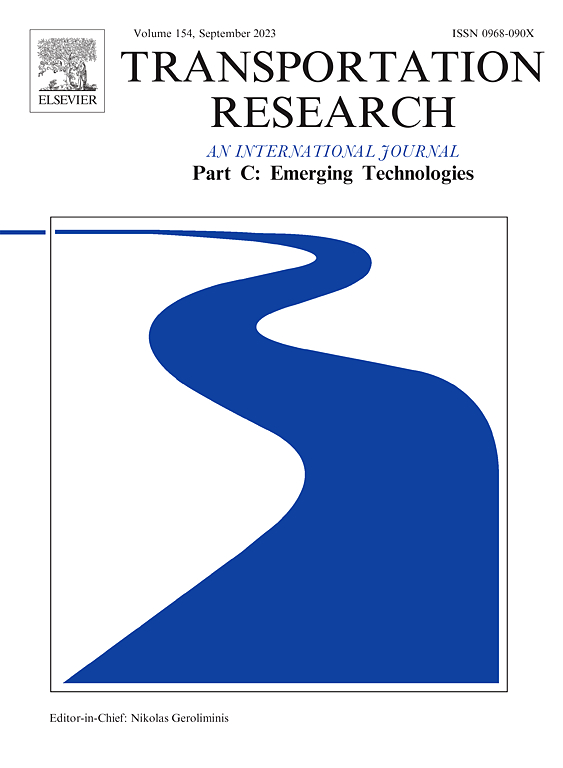A composite transportation network design problem with land-air coordinated operations
IF 7.6
1区 工程技术
Q1 TRANSPORTATION SCIENCE & TECHNOLOGY
Transportation Research Part C-Emerging Technologies
Pub Date : 2025-02-01
DOI:10.1016/j.trc.2024.104967
引用次数: 0
Abstract
With the advent of electric vertical-takeoff-and-landing (eVTOL) vehicles, it becomes imperative to assess their impact on transportation network efficiency. Hence, this paper introduces a novel model for the composite transportation network design problem (CTNDP). Specifically, the model is designed to inform the planning of composite transportation networks by considering travel behaviors of land-air coordinated mobility. This innovative model is formulated as a bi-level programming problem, in which the upper-level model focuses on strategically planning vertiport locations and capacities, thereby reducing the total travel time within the transportation system. Upon determining decisions at the upper level, the composite transportation network can be established by constructing new links that interconnect the vertiports and existing road networks. The lower-level model addresses the land-air collaboration network equilibrium (LAC-NE) problem through mathematical programming. To solve the bi-level programming problem, a customized Bayesian optimization method, namely the mixed-integer Bayesian optimization (MI-BO) method, is proposed. Specifically, MI-BO is developed by incorporating the branch-and-bound algorithm into the Bayesian optimization framework. Additionally, an advanced path-based improved gradient projection (IGP) algorithm is developed to efficiently resolve the LAC-NE problem. The efficacy of the proposed model and solution algorithms are substantiated through numerical experiments, and the results illustrate the impact of land-air coordinated operations on the performance of the composite transportation network.
求助全文
约1分钟内获得全文
求助全文
来源期刊
CiteScore
15.80
自引率
12.00%
发文量
332
审稿时长
64 days
期刊介绍:
Transportation Research: Part C (TR_C) is dedicated to showcasing high-quality, scholarly research that delves into the development, applications, and implications of transportation systems and emerging technologies. Our focus lies not solely on individual technologies, but rather on their broader implications for the planning, design, operation, control, maintenance, and rehabilitation of transportation systems, services, and components. In essence, the intellectual core of the journal revolves around the transportation aspect rather than the technology itself. We actively encourage the integration of quantitative methods from diverse fields such as operations research, control systems, complex networks, computer science, and artificial intelligence. Join us in exploring the intersection of transportation systems and emerging technologies to drive innovation and progress in the field.

 求助内容:
求助内容: 应助结果提醒方式:
应助结果提醒方式:


